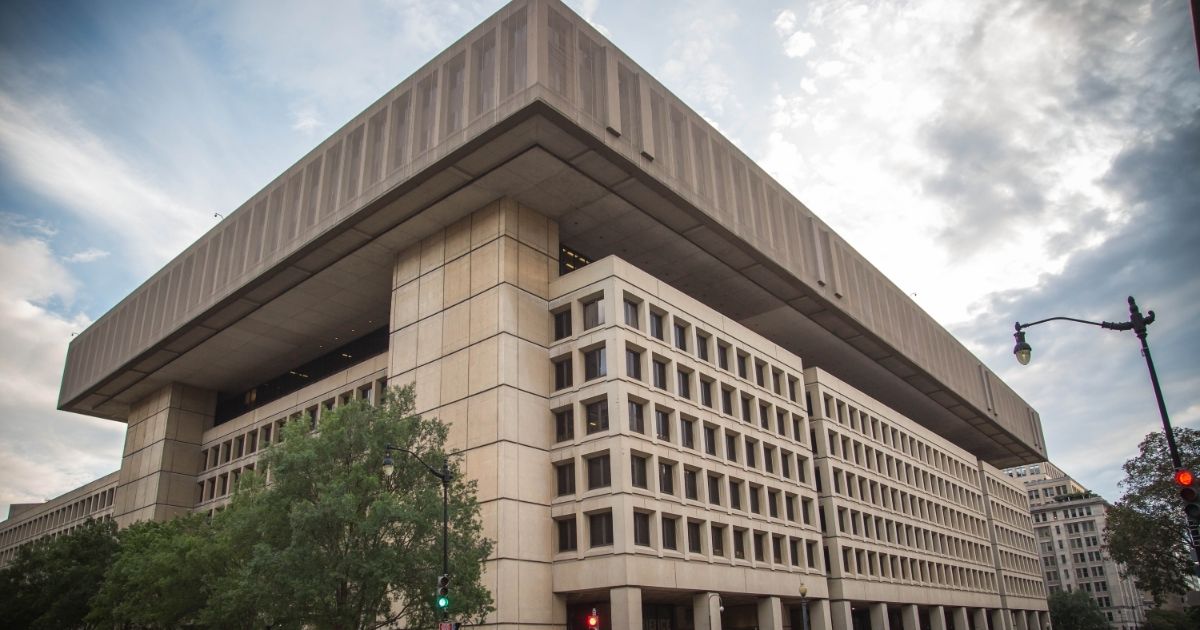
David Harsanyi: The Name of DC's Oppressive Style of Architecture Fits Perfectly
In his 1981 diatribe against contemporary American architecture, “From Bauhaus to Our House,” Tom Wolfe notes that seemingly every American child “goes to a school in a building that looks like a duplicating-machine replacement-parts wholesale distribution center warehouse.”
Anecdotally speaking, this still seems to be the case in East Coast metro areas like Washington and New York City, where suburban teens shuffle in and out of buildings that could double as minimum-security prisons.
Wolfe traces the problem to the Lost Generation, which internalized the notion that “they do things better in Europe.” In architecture, this outlook was made manifest in the insipid giant glass boxes erected up and down Sixth Avenue in Manhattan and in other major cities from the 1950s to the 1970s.
On Wolfe’s mind was the demolition of the original Beaux Arts Penn Station — “the Roman Temple of transportation,” one paper called it — and the construction of the modern Madison Square Garden. Across the country, American towns were being blighted by unsightly and cheerless concrete structures masquerading as utilitarian art much in the same way that the walls of dentists’ offices were being hung with third-rate Jackson Pollock knockoffs posing as abstract expressionism.
When President Donald Trump signed a rather toothless executive order encouraging the use of classical architectural styles — Neoclassical, Georgian, Greek Revival, Gothic — over modernist styles in new federal buildings, “absent exceptional factors necessitating another kind of architecture,” there was the usual grousing.
It was Trump, after all, so complain they must. But the president — his own kitschy taste notwithstanding — wasn’t wrong to note that most federal buildings put up in the past five decades are “undistinguished,” “uninspiring” and “just plain ugly.”
Long before Trump came to town, it was tradition in D.C. to grumble about how these buildings tarnish the place.
Most-often cited for ugliness is the J. Edgar Hoover Building, but the soul-sucking Washington edifices that house the Department of Housing and Urban Development, the Department of Health and Human Services, and the Department of Energy are just as aesthetically depressing.
The technical architectural term for these buildings is “brutalism,” but ideologically speaking they are “fascist aspirational.”
Brutalist architecture, which Theodore Dalrymple once described as arising from the “spiritual, intellectual, and moral deformity” of totalitarianism, is the ideal style for the gigantic bureaucratic institutions that were built to lord over Americans. So perhaps a city that houses such massive bureaucracies deserves its joyless structures.
And if you’re under the impression that they aren’t political statements, consider that, even today, architecture professors take to the pages of major newspapers to romanticize these monstrosities as places “envisioned as being monumental symbols of how important the civic realm was.”
Surely, in more than one sense, Thomas Jefferson would be appalled by the sight of the James V. Forrestal Building, which was built in the 1960s on what was once a neighborhood of Victorian row houses.
Demolishing architectural gems of the late 19th and early 20th centuries to erect edifices that feel like the East German Housing Authority Headquarters is an act of cultural sabotage. It’s un-American. But then again, so is the Department of Energy.
While Washington doesn’t need retro-fascistic boxes of concrete, it could use more thoughtful or uplifting new buildings. I don’t imagine myself any kind of expert on architecture — and it should be pointed out that the Trump executive order is narrowly crafted for buildings that house government agencies — but the knee-jerk detestation provoked in some people by any contemporary architecture is confusing.
In Denver, where I lived for nearly a decade, the prominent art museum expansion resembles one of those Jawa sandcrawlers from “Star Wars.” It’s fantastic.
Down the street, there is the gentrified LoDo District, where old warehouses and factories have been turned into upscale modern condos, preserving the architectural integrity of the 20th century, but interspersed with new, imaginative structures.
There is Larimer Square, with its Victorian houses, and exurbs dotted with midcentury modern homes; just outside the city is the so-called Sleeper House, the space-age domicile made famous (once) in Woody Allen’s movie. All of this diversity gives Denver an interesting look and vibe.
Surely, D.C. has enough Greek Revival architecture to last us another 200 years. My God, does it get boring. And does any major city have as tedious a downtown as D.C.’s? Just a bunch of nondescript 10-story boxes, exuding the thoughtfulness of a midsized city’s tech center.
The rare interesting contemporary construction is usually modernistic, sometimes tepidly “brutalist” — the DuPont Circle Metro station, the Hirshhorn Museum, or the National Museum of African American History and Culture, the last of which tries its best to balance out some of the oppressiveness of the bureaucratic government buildings nearby.
Good luck.
© 2020 CREATORS.COM
The views expressed in this opinion article are those of their author and are not necessarily either shared or endorsed by the owners of this website. If you are interested in contributing an Op-Ed to The Western Journal, you can learn about our submission guidelines and process here.
Truth and Accuracy
We are committed to truth and accuracy in all of our journalism. Read our editorial standards.
Advertise with The Western Journal and reach millions of highly engaged readers, while supporting our work. Advertise Today.












